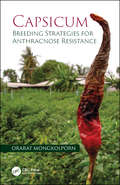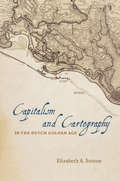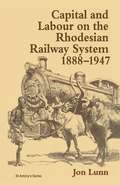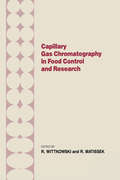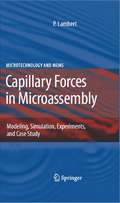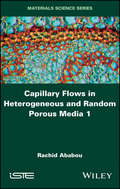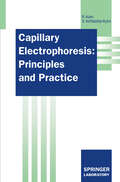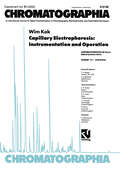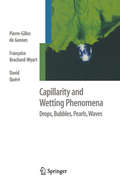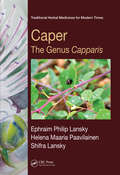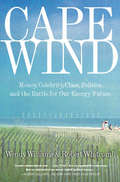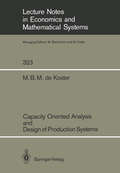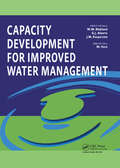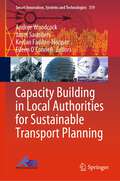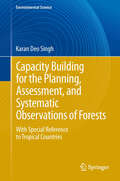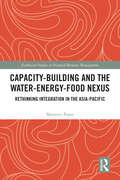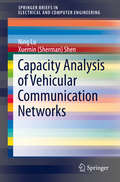- Table View
- List View
Capsicum: Breeding Strategies for Anthracnose Resistance
by Orarat MongkolpornCapsicum, more commonly as chili or chili pepper, is an important global vegetable and spice crop. Anthracnose disease, caused by a complex of Colletotrichum species, is the major biotic stress limiting chili production in tropical and subtropical countries. Anthracnose disease mainly manifests itself as a post-harvest disease, resulting in large necrotic lesions on the fruit. This disease is mainly controlled by the application of a "cocktail" of fungicides as commercial resistant cultivars are not available. In recent years, insights into the complexity of the pathogen and the genomics of the host have been accomplished using cutting-edge molecular technologies. The author has been at the forefront of this technology revolution in Capsicum breeding through her research to understand the host and pathogen which has led to the development of new anthracnose resistant genotypes. Capsicum: Breeding Strategies for Anthracnose Resistance is structured based on a review of the origin and evolution of Capsicum, Capsicum genetic diversity and germplasm resources, the latest research in the biology and taxonomy of Colletotrichum pathogens of Capsicum, and the classic and molecular breeding for resistance in Capsicum to the suite of Colletotrichum pathogens that infect Capsicum globally. This book brings together knowledge on both the pathogen and the host, which is often overlooked when reviewing the breeding and genetics of a crop plant. It informs the facts behind breeding for resistance from both the host and pathogen perspectives.
Capitalism and Cartography in the Dutch Golden Age
by Elizabeth A. SuttonIn Capitalism and Cartography in the Dutch Golden Age, Elizabeth A. Sutton explores the fascinating but previously neglected history of corporate cartography during the Dutch Golden Age, from ca. 1600 to 1650. She examines how maps were used as propaganda tools for the Dutch West India Company in order to encourage the commodification of land and an overall capitalist agenda. Building her exploration around the central figure of Claes Jansz Vischer, an Amsterdam-based publisher closely tied to the Dutch West India Company, Sutton shows how printed maps of Dutch Atlantic territories helped rationalize the Dutch Republic’s global expansion. Maps of land reclamation projects in the Netherlands, as well as the Dutch territories of New Netherland (now New York) and New Holland (Dutch Brazil), reveal how print media were used both to increase investment and to project a common narrative of national unity. Maps of this era showed those boundaries, commodities, and topographical details that publishers and the Dutch West India Company merchants and governing Dutch elite deemed significant to their agenda. In the process, Sutton argues, they perpetuated and promoted modern state capitalism.
Capitalism and Cartography in the Dutch Golden Age
by Elizabeth A. SuttonIn Capitalism and Cartography in the Dutch Golden Age, Elizabeth A. Sutton explores the fascinating but previously neglected history of corporate cartography during the Dutch Golden Age, from ca. 1600 to 1650. She examines how maps were used as propaganda tools for the Dutch West India Company in order to encourage the commodification of land and an overall capitalist agenda. Building her exploration around the central figure of Claes Jansz Vischer, an Amsterdam-based publisher closely tied to the Dutch West India Company, Sutton shows how printed maps of Dutch Atlantic territories helped rationalize the Dutch Republic’s global expansion. Maps of land reclamation projects in the Netherlands, as well as the Dutch territories of New Netherland (now New York) and New Holland (Dutch Brazil), reveal how print media were used both to increase investment and to project a common narrative of national unity. Maps of this era showed those boundaries, commodities, and topographical details that publishers and the Dutch West India Company merchants and governing Dutch elite deemed significant to their agenda. In the process, Sutton argues, they perpetuated and promoted modern state capitalism.
Capitalism and Cartography in the Dutch Golden Age
by Elizabeth A. SuttonIn Capitalism and Cartography in the Dutch Golden Age, Elizabeth A. Sutton explores the fascinating but previously neglected history of corporate cartography during the Dutch Golden Age, from ca. 1600 to 1650. She examines how maps were used as propaganda tools for the Dutch West India Company in order to encourage the commodification of land and an overall capitalist agenda. Building her exploration around the central figure of Claes Jansz Vischer, an Amsterdam-based publisher closely tied to the Dutch West India Company, Sutton shows how printed maps of Dutch Atlantic territories helped rationalize the Dutch Republic’s global expansion. Maps of land reclamation projects in the Netherlands, as well as the Dutch territories of New Netherland (now New York) and New Holland (Dutch Brazil), reveal how print media were used both to increase investment and to project a common narrative of national unity. Maps of this era showed those boundaries, commodities, and topographical details that publishers and the Dutch West India Company merchants and governing Dutch elite deemed significant to their agenda. In the process, Sutton argues, they perpetuated and promoted modern state capitalism.
Capitalism and Cartography in the Dutch Golden Age
by Elizabeth A. SuttonIn Capitalism and Cartography in the Dutch Golden Age, Elizabeth A. Sutton explores the fascinating but previously neglected history of corporate cartography during the Dutch Golden Age, from ca. 1600 to 1650. She examines how maps were used as propaganda tools for the Dutch West India Company in order to encourage the commodification of land and an overall capitalist agenda. Building her exploration around the central figure of Claes Jansz Vischer, an Amsterdam-based publisher closely tied to the Dutch West India Company, Sutton shows how printed maps of Dutch Atlantic territories helped rationalize the Dutch Republic’s global expansion. Maps of land reclamation projects in the Netherlands, as well as the Dutch territories of New Netherland (now New York) and New Holland (Dutch Brazil), reveal how print media were used both to increase investment and to project a common narrative of national unity. Maps of this era showed those boundaries, commodities, and topographical details that publishers and the Dutch West India Company merchants and governing Dutch elite deemed significant to their agenda. In the process, Sutton argues, they perpetuated and promoted modern state capitalism.
Capital and Labour on the Rhodesian Railway System, 1888–1947 (St Antony's Series)
by Jon LunnThis important book is the first in-depth history of the Rhodesian railway system. Covering the period 1888-1947, when the Rhodesian railway system was privately owned by Cecil Rhode's British South Africa Company, this book uses the Rhodesian railway system as a prism through which it refracts many dimensions of the imperial experience in central and southern Africa, ranging from the impulses underpinning the regional ambitions of Rhodes himself to the origins of black worker protest in the Rhodesias.
Capillary Surfaces: Shape — Stability — Dynamics, in Particular Under Weightlessness (Springer Tracts in Modern Physics #178)
by Dieter W. LangbeinFeaturing a foreword by the astronaut Ulf Merbold, this book is devoted to interfaces between two fluids, that is, between a liquid and a gas or between two liquids. It is the first review on the subject, providing an up-to-date overview.
Capillary Gas Chromotography in Food Control and Research
by R. WittkowskiThis book offers a comprehensive survey on the possibilities, applications, and new developments of capillary gas chromatography for the complete range of examinations of food and raw material. It is intended for food scientists/chemists, food technologists, and nutritionists.
Capillary Gas Chromotography in Food Control and Research
by R. WittkowskiThis book offers a comprehensive survey on the possibilities, applications, and new developments of capillary gas chromatography for the complete range of examinations of food and raw material. It is intended for food scientists/chemists, food technologists, and nutritionists.
Capillary Forces in Microassembly: Modeling, Simulation, Experiments, and Case Study (Microtechnology and MEMS)
by Pierre LambertCapillary Forces in Microassembly discusses the use of capillary forces as a gripping principle in microscale assembly. Clearly written and well-organized, this text brings together physical concepts at the microscale with practical applications in micromanipulation. Throughout this work, the reader will find a review of the existing gripping principles, elements to model capillary forces as well as descriptions of the simulation and experimental test bench developed to study the design parameters. Using well-known concepts from surface science (such as surface tension, capillary effects, wettability, and contact angles) as inputs to mechanical models, the amount of effort required to handle micro-components is then predicted. Researchers and engineers involved in micromanipulation and precision assembly will find this a highly useful reference for microassembly system design and analysis.
Capillary Flows in Heterogeneous and Random Porous Media
by Rachid AbabouCapillary phenomena occur in both natural and human-made systems, from equilibria in the presence of solids (grains, walls, metal wires) to multiphase flows in heterogeneous and fractured porous media. This book, composed of two volumes, develops fluid mechanics approaches for two immiscible fluids (water/air or water/oil) in the presence of solids (tubes, joints, grains, porous media). Their hydrodynamics are typically dominated by capillarity and viscous dissipation. This first volume presents the basic concepts and investigates two-phase equilibria, before analyzing two-phase hydrodynamics in discrete and/or statistical systems (tubular pores, planar joints). It then studies flows in heterogeneous and stratified porous media, such as soils and rocks, based on Darcy’s law. This analysis includes unsaturated flow (Richards equation) and two-phase flow (Muskat equations). Overall, the two volumes contain basic physical concepts, theoretical analyses, field investigations and statistical and numerical approaches to capillary-driven equilibria and flows in heterogeneous systems
Capillary Flows in Heterogeneous and Random Porous Media
by Rachid AbabouCapillary phenomena occur in both natural and human-made systems, from equilibria in the presence of solids (grains, walls, metal wires) to multiphase flows in heterogeneous and fractured porous media. This book, composed of two volumes, develops fluid mechanics approaches for two immiscible fluids (water/air or water/oil) in the presence of solids (tubes, joints, grains, porous media). Their hydrodynamics are typically dominated by capillarity and viscous dissipation. This first volume presents the basic concepts and investigates two-phase equilibria, before analyzing two-phase hydrodynamics in discrete and/or statistical systems (tubular pores, planar joints). It then studies flows in heterogeneous and stratified porous media, such as soils and rocks, based on Darcy’s law. This analysis includes unsaturated flow (Richards equation) and two-phase flow (Muskat equations). Overall, the two volumes contain basic physical concepts, theoretical analyses, field investigations and statistical and numerical approaches to capillary-driven equilibria and flows in heterogeneous systems
Capillary Electrophoresis: Principles and Practice (Springer Lab Manuals)
by Reinhard Kuhn Sabrina Hoffstetter-KuhnCapillary electrophoresis (CE) is a brand-new analytical me- thod with the capability of solving many analytical separa- tion problems very fast and economically. This method gives new information about the investigated substances which can- not easily be obtained by other means. CE has become an established method only recently, but will be implemented in almost every analytical laboratory in industry, service units and academia in the near future. The most important fields of CE application are pharmaceutical and biochemical research and quality control. The authors have exhaustive practical experience in the application of CE methods in the pharmaceutical industry and provide the reader with a comprehensive treatment of this method. The main focus is on how to solve problems when applying CE in the laboratory. Physico-chemical theory is only dealt with in depth when necessary to understand the underlying separation mechanisms in order to solve your problems at the analytical bench. An addendum includes tables on the preparation of buffers and recommended further reading.
Capillary Electrophoresis: Instrumentation and Operation (CHROMATOGRAPHIA CE-Series #4)
by Wim KokIn this volume the general principles of capillary (zone) electrophoresis, the performance of this separation method to be expected, the instrumentation and techniques available and practical guidelines for the operaton of CE instruments will be discussed. The emphasis will be on the routine application of CE with commercially available instruments, but attention will also be paid to devolpments still in a research stage and their possible implications for the future.
Capillarity and Wetting Phenomena: Drops, Bubbles, Pearls, Waves
by Pierre-Gilles de Gennes Francoise Brochard-Wyart David QuereThe study of capillarity is in the midst of a veritable explosion. What is offered here is not a comprehensive review of the latest research but rather a compendium of principles designed for the undergraduate student and for readers interested in the physics underlying these phenomena.
Caper: The Genus Capparis (Traditional Herbal Medicines for Modern Times #12)
by Ephraim Philip Lansky Helena Maaria Paavilainen Shifra LanskyCaper: The Genus Capparis presents a pharmacognostic and ethnopharmacological exploration of the genus Capparis, emphasizing its medicinal potential. There is a long history of safe usage of Capparis parts both in diet and as plant drugs throughout the world, and the details of this usage are summarized in 39 tables covering numerous Capparis speci
Cape Wind: Money, Celebrity, Class, Politics, and the Battle for Our Energy Future on Nantucket Sound
by Wendy Williams Robert WhitcombWhen Jim Gordon set out to build a wind farm off the coast of Cape Cod, he knew some people might object. But there was a lot of merit in creating a privately funded, clean energy source for energy-starved New England, and he felt sure most people would recognize it eventually. Instead, all Hell broke loose. Gordon had unwittingly challenged the privileges of some of America's richest and most politically connected people, and they would fight him tooth and nail, no matter what it cost, and even when it made no sense.Cape Wind is a rollicking tale of democracy in action and plutocracy in the raw as played out among colorful and glamorous characters on one of our country's most historic and renowned pieces of coastline. As steeped in American history and local color as The Prince of Providence; as biting, revealing and fun as Philistines at the Hedgerow, it is also a cautionary tale about how money can hijack democracy while America lags behind the rest of the developed world in adopting clean energy.
Capacity Oriented Analysis and Design of Production Systems (Lecture Notes in Economics and Mathematical Systems #323)
by M.B.M. de KosterIn production systems there are often capacity oriented performance objectives, like a desired total throughput, a desired average throughput time and average work in-process. Such performance objectives are expressed in "units of products" rather than in specific product types. This book presents a way of modeling and analyzing production systems so, that such capacity oriented performance criteria can be measured in a simple way. The model consists of three basic elements. 1. The product types in the system are aggregated. 2. The product flow is modeled as being continuous. 3. The machines in the model have a finite number of states. Each state has a phase-type sojourn distribution and an associated production speed. Transitions between the states are determined by an irreducible Markov transition matrix. In the book both the mathematical properties and the practical applicabilities of the model are investigated. The model is extensively analyzed for various layouts, like flow lines, assembly disassembly systems and networks where parallel machines share common buffers. Furthermore various ways of controlling the product flow in the model are investigated, such as Base Stock Control, Workload Control, control by finite buffers and control by the Reorder Point System. An approximation technique is developed for a quick estimation of performance measures like throughput and average work-in-process, for networks with layouts and control techniques like those above-mentioned.
Capacity Development for Improved Water Management
by Maarten Blokland Guy Alaerts Judith Kaspersma Matt HareThis collection of papers explains how knowledge and capacity development can contribute to improved, effective water management with a digest of lessons learned in the areas of development of tools and techniques, field applications and evaluation. The authors are prominent practitioners, capacity builders and academics within the water and capacity development sectors.Capacity Development for Improved Water Management starts with an introduction and overview of progress and challenges in knowledge and capacity development in the water sector. The next part presents tools and techniques that are being used in knowledge and capacity development in response to the prevailing challenges in the water sector, and a review of experience with capacity change in other sectors. In the third part a number of cases are presented that cover knowledge and capacity development experiences in the water resources and water services sectors. This part also presents experiences on water education for children and on developing gender equity. The fourth part provides experiences with the monitoring and evaluation of knowledge and capacity building.
Capacity Development for Improved Water Management
by M.W. Blokland, G.J. Alaerts, J.M. Kaspersma and M. HareThis collection of papers explains how knowledge and capacity development can contribute to improved, effective water management with a digest of lessons learned in the areas of development of tools and techniques, field applications and evaluation. The authors are prominent practitioners, capacity builders and academics within the water and capacity development sectors.Capacity Development for Improved Water Management starts with an introduction and overview of progress and challenges in knowledge and capacity development in the water sector. The next part presents tools and techniques that are being used in knowledge and capacity development in response to the prevailing challenges in the water sector, and a review of experience with capacity change in other sectors. In the third part a number of cases are presented that cover knowledge and capacity development experiences in the water resources and water services sectors. This part also presents experiences on water education for children and on developing gender equity. The fourth part provides experiences with the monitoring and evaluation of knowledge and capacity building.
Capacity Building in Local Authorities for Sustainable Transport Planning (Smart Innovation, Systems and Technologies #319)
by Andree Woodcock Janet Saunders Keelan Fadden-Hopper Eileen O’ConnellThis book is conceptualized as being of interest to researchers in the field of sustainable transport, and also those who are working in the field. In the first case it will provide a reference on the state of the art of sustainable transport, and will also include insights into an EU project, how to go about delivering impact, how such projects effect local authorities, etc. Sustainable transport is an extreme growth area; it is highly innovative, with multi-million-pound investments transforming cities. The book will help and encourage resource poor small to medium local authorities catch up and meet their sustainability targets.
Capacity Building for the Planning, Assessment and Systematic Observations of Forests: With Special Reference to Tropical Countries (Environmental Science and Engineering)
by Karan Deo SinghThis book is intended to support the forestry institutions in the tropical countries in the planning, assessment and systematic observation of forests required to fulfill their obligations as laid in international conventions such as the CBD and UNFCCC. Following the Rio Conference, a number of countries, donors and international organizations have implemented capacity-building projects with varying degrees of success. One main reason for the varying success rates seems to lie in the design of technical assistance programs, which have been formulated on the traditional lines of mainly generating forest resources information or transferring technology; whereas Agenda 21 requires fundamental changes in countries’ institutions and approaches to planning and implementing the conservation and sustainable development of forests through a process of continuing research and analysis. The book is intended to serve the basic needs of national planning strategies and international and donor support.
Capacity-Building and the Water-Energy-Food Nexus: Rethinking Integration in the Asia-Pacific (Earthscan Studies in Natural Resource Management)
by Maureen PapasCritically analysing methodologies and objectives of capacity building and the practical linkages required to achieve the Sustainable Development Goals, this book looks at whether nexus thinking offers a systematic approach to combat global environmental problems and facilitate enhanced sustainable development. Building effective and sustainable mechanisms to tackle environmental problems requires in-depth understanding of relationships between natural resources, going beyond conventional policy and siloed decision making. The water energy food nexus has been promoted as a conceptual framework and management tool to facilitate integrated planning and practical linkages to support sustainable development. The author opens this book with an overview of capacity building and reviews the significance of the water energy food nexus, bringing in links to the 2030 Agenda. Climate change is highlighted as a key consideration in any conversation about natural resource use and case studies from Japan, India and China are utilised to show that whist long-term sustainable development practices are being implemented the environmental challenges across the region raise concerns about institutional capacity, economic sustainability and future of the region. Finally, through the lens of capacity building, the book suggests that whilst the water energy food nexus may provide a new approach to sustainable development, it will not be enough to achieve long-term sustainability or extend to the lives of those most affected. The book will be interest to scholars and students within the water, energy and agriculture sectors, sustainability governance and sustainable development. It will also be a valuable resource to those working in governmental organisations and NGOs involved in capacity building and development.
Capacity-Building and the Water-Energy-Food Nexus: Rethinking Integration in the Asia-Pacific (Earthscan Studies in Natural Resource Management)
by Maureen PapasCritically analysing methodologies and objectives of capacity building and the practical linkages required to achieve the Sustainable Development Goals, this book looks at whether nexus thinking offers a systematic approach to combat global environmental problems and facilitate enhanced sustainable development. Building effective and sustainable mechanisms to tackle environmental problems requires in-depth understanding of relationships between natural resources, going beyond conventional policy and siloed decision making. The water energy food nexus has been promoted as a conceptual framework and management tool to facilitate integrated planning and practical linkages to support sustainable development. The author opens this book with an overview of capacity building and reviews the significance of the water energy food nexus, bringing in links to the 2030 Agenda. Climate change is highlighted as a key consideration in any conversation about natural resource use and case studies from Japan, India and China are utilised to show that whist long-term sustainable development practices are being implemented the environmental challenges across the region raise concerns about institutional capacity, economic sustainability and future of the region. Finally, through the lens of capacity building, the book suggests that whilst the water energy food nexus may provide a new approach to sustainable development, it will not be enough to achieve long-term sustainability or extend to the lives of those most affected. The book will be interest to scholars and students within the water, energy and agriculture sectors, sustainability governance and sustainable development. It will also be a valuable resource to those working in governmental organisations and NGOs involved in capacity building and development.
Capacity Analysis of Vehicular Communication Networks (SpringerBriefs in Electrical and Computer Engineering)
by Ning Lu Xuemin (Sherman) ShenThis SpringerBrief focuses on the network capacity analysis of VANETs, a key topic as fundamental guidance on design and deployment of VANETs is very limited. Moreover, unique characteristics of VANETs impose distinguished challenges on such an investigation. This SpringerBrief first introduces capacity scaling laws for wireless networks and briefly reviews the prior arts in deriving the capacity of VANETs. It then studies the unicast capacity considering the socialized mobility model of VANETs. With vehicles communicating based on a two-hop relaying scheme, the unicast capacity bound is derived and can be applied to predict the throughput of real-world scenarios of VANETs. The downlink capacity of VANETs is also investigated in which access infrastructure is deployed to provide pervasive Internet access to vehicles. Different alternatives of wireless access infrastructure are considered. A lower bound of downlink capacity is derived for each type of access infrastructure. The last section of this book presents a case study based on a perfect city grid to examine the capacity-cost trade-offs of different deployments since the deployment costs of different access infrastructure are highly variable.
